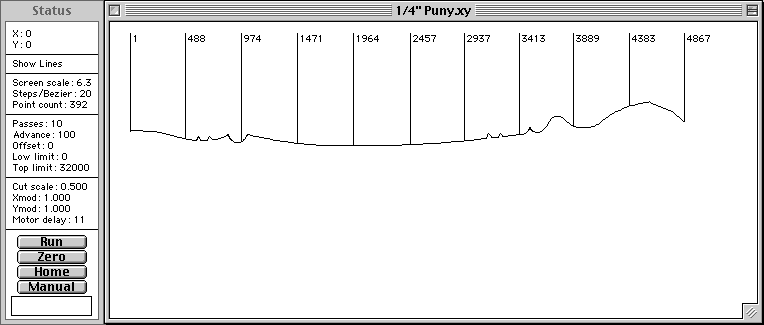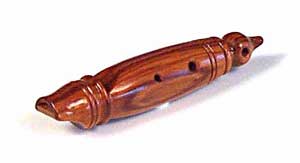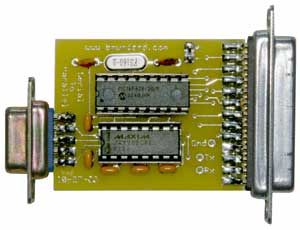|
|
|
Macintosh CNC Lathe
|
A Macintosh CNC Lathe
During the time that I was producing the Puny Tune flute for sale, I decided to build a CNC lathe with which to turn the wooden flute bodies. I bought a Sherline long bed lathe with a riser block and mounted stepper motors to the two axes. I had already written my own mill driving software, so I modified it to drive the Sherline lathe. A screen image of the program is shown below.

The lathe program was written to run on a Macintosh computer. The input to the program is an Adobe Illustrator file. This served my purposes because the free form shapes I wanted to turn were much easier to draw in Illustrator than with conventional CAD software. Once a profile was measured out and drawn, the lathe program interprets the PostScript file and generates a sequence of points. The stepper motors are commanded to move in straight line segments between these points. The degree of resolution can be specified in the program. The value of "Steps/Bezier" in the Status window determines the resolution of rendering. The "Point count" shows how many fixed points were actually generated.
On the right side of the screen is the preview window. It shows the profile that will be turned. The numbers indicate steps of travel to get to that point. This allows the program to turn a portion of the whole shape. In the Status window, the "Low limit" and "Top limit" determine which portion will be turned.
 For wood turning, you load the lathe with a round dowel and start the cutter at the dowel diameter. The program will take an arbitrary number of bi-directional passes along the defined length of the work and advance a specified amount after each pass. In the Status window above, it is set to take 10 passes with an advance of 100 steps each time. The cutter is a very narrow "V" shape, which will get into the details as drawn. One of the Puny Tunes that was turned on this lathe is shown here.
For wood turning, you load the lathe with a round dowel and start the cutter at the dowel diameter. The program will take an arbitrary number of bi-directional passes along the defined length of the work and advance a specified amount after each pass. In the Status window above, it is set to take 10 passes with an advance of 100 steps each time. The cutter is a very narrow "V" shape, which will get into the details as drawn. One of the Puny Tunes that was turned on this lathe is shown here.
The lathe program can be configured to preview the general shape of the part (Show lines) or to show the individual points that define it (Show points). This allows you to evaluate the resolution of conversion from the PostScript file.
 The program also lets you scale the workpiece symmetrically or by a single axis. "Cut scale" is a symmetrical scaling and "Xmod" and "Ymod" are single axis distortions. The tiny Puny Tune shown here, next to a quarter, is simply a 25% reduction from the original file..
The program also lets you scale the workpiece symmetrically or by a single axis. "Cut scale" is a symmetrical scaling and "Xmod" and "Ymod" are single axis distortions. The tiny Puny Tune shown here, next to a quarter, is simply a 25% reduction from the original file..

The finial shown here was also drawn in Adobe Illustrator and turned on the Sherline lathe.

This software was originally written in the early 1990s and required somewhat elaborate custom hardware to interface the Macintosh computer to stepper motors. I have recently (November 2003) been working on a simple interface between a Macintosh computer and stepper motor drivers used with Windows parallel ports. This board takes the output from the Macintosh lathe program and presents it to the stepper driver as if it were a PC parallel port. The input is serial so a USB to serial adaptor may be needed. The software is Classic, not OSX. Let me know if you have an interest in Mac CNC.
Bryan Mumford
Santa Barbara, California
November 2, 2003

Home | Rotary table | CNC Mill | Wood Router